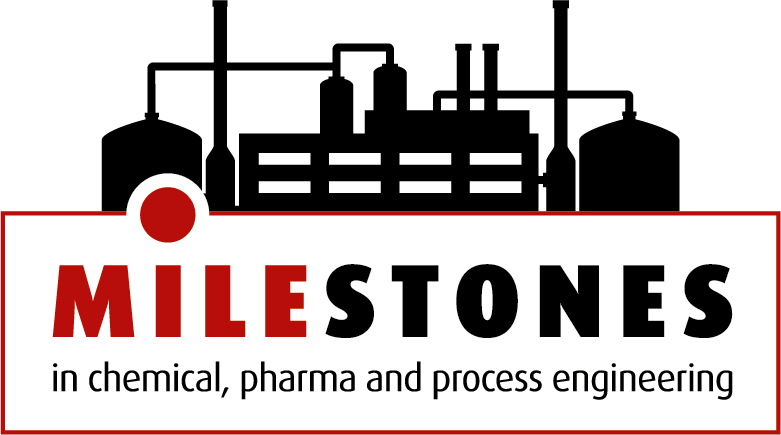:quality(80)/images.vogel.de/vogelonline/bdb/1776600/1776627/original.jpg)
Norway: Sustainable Solutions Yara Announces Large-Scale Green Ammonia Project in Norway
Yara has plans to produce 500,000 tonnes per annum of green ammonia in Norway. The move is expected to support the hydrogen economy in the region. The company also has plans to fully electrify its ammonia plant in Porsgrunn which has the potential to reduce 800,000 tonnes of CO2 per annum.
Related Company

Oslo/Norway – Yara has announced plans for 500,000 tonnes per annum green ammonia production in Norway, powering emission-free shipping fuels and decarbonised food solutions.
“Ammonia is the most promising hydrogen carrier and zero-carbon shipping fuel, and Yara is the global ammonia champion; a leader within production, logistics and trade. I am excited to announce that a full-scale green ammonia project is possible in Norway, where we can fully electrify our Porsgrunn ammonia plant,” says Svein Tore Holsether, President and Chief Executive Officer of Yara.
Ammonia’s chemical properties make it ideally suited for the hydrogen economy. It does not require cooling to extreme temperatures, and has a higher energy density than liquid hydrogen, making it more efficient to transport and store. Ammonia is therefore the most promising hydrogen carrier and zero-carbon shipping fuel.
Building on its long experience and leading position within global ammonia production, logistics and trade, Yara aims to capture opportunities within shipping, agriculture and industrial applications, in a market expected to grow by 60 per cent over the next two decades. Against this backdrop, Yara announces plans to fully electrify its ammonia plant in Porsgrunn, Norway with the potential to cut 800,000 tonnes of CO2 per annum, equivalent to the emissions from 300,000 passenger cars.
To make its vision of zero-emission ammonia production in Norway a reality, Yara is seeking partners and government support. If the required public co-funding and regulatory framework is in place, the project could be operational in 2026. The project would eliminate one of Norway’s largest static CO2 sources, and would be a major contributor for Norway to reach its Paris agreement commitments. Yara aims to fully remove CO2 emissions from its Porsgrunn ammonia production and thereby produce emission-free fuel for shipping, carbon-free fertiliser and ammonia for industrial applications.
Among several growth and improvement initiatives, Yara outlines a transformation of its commercial business models, sales channels and offerings, targeting revenue growth from new online services, outcome-based models and carbon market digital services, with an ambition to add 300-600 million dollars new Ebitda by 2025 on top of existing initiatives.
“Yara is uniquely positioned to help decarbonise the food chain, with trusted relationships with millions of farmers in 65 countries,” says Terje Knutsen, EVP Farming Solutions. “We see a clear opportunity to contribute to sustainable agriculture, while at the same building new business for both farmers and for Yara. As an example, we can directly address 70 % of corn crop emissions with optimal crop nutrition and soil health measures.”
Yara is targeting a 30 % reduction in Scope 1 and Scope 2 emissions by 2030, and is committing to establishing Science Based Targets, based on an industry-shaping collaboration with Nutrien and WBCSD, and supporting a Sectoral Decarbonisation Approach analysis for the nitrogen fertiliser industry.
“We believe that shareholder value creation is stronger when the perspectives of people, planet and prosperity together shape the basis of our performance management. By improving our diversity, stepping up our climate ambitions and strengthening our financial returns we are making an even stronger Yara going forward,” says EVP & CFO Lars Røsæg.
Yara will maintain a strong focus on capital discipline and commitment to its capital allocation policy, targeting a mid-cycle Return on Invested Capital (ROIC) above 10 per cent, and keeping total capex for 2020 and 2021 combined unchanged at maximum 2.2 billion dollars, with a total annual capex of maximum 1.2 billion dollars for 2022 onwards.
(ID:47029911)




:quality(80)/images.vogel.de/vogelonline/bdb/1776400/1776407/original.jpg)
:quality(80)/images.vogel.de/vogelonline/bdb/1775400/1775406/original.jpg)
:quality(80)/images.vogel.de/vogelonline/bdb/1771200/1771247/original.jpg)
:quality(80)/images.vogel.de/vogelonline/bdb/1777100/1777177/original.jpg)
:quality(80)/images.vogel.de/vogelonline/bdb/1776600/1776653/original.jpg)
:quality(80)/images.vogel.de/vogelonline/bdb/1776600/1776608/original.jpg)
:quality(80)/images.vogel.de/vogelonline/bdb/1776200/1776236/original.jpg)
:quality(80)/images.vogel.de/vogelonline/bdb/1755500/1755515/original.jpg)
:quality(80)/images.vogel.de/vogelonline/bdb/1750100/1750119/original.jpg)
:quality(80)/images.vogel.de/vogelonline/bdb/1744100/1744189/original.jpg)
:quality(80)/images.vogel.de/vogelonline/bdb/1740600/1740654/original.jpg)
:quality(80)/images.vogel.de/vogelonline/bdb/1775800/1775854/original.jpg)
:quality(80)/images.vogel.de/vogelonline/bdb/1775100/1775124/original.jpg)
:quality(80)/images.vogel.de/vogelonline/bdb/1774700/1774743/original.jpg)
:quality(80)/images.vogel.de/vogelonline/bdb/1774600/1774609/original.jpg)
:quality(80)/images.vogel.de/vogelonline/bdb/1775200/1775249/original.jpg)
:quality(80)/images.vogel.de/vogelonline/bdb/1774400/1774413/original.jpg)
:quality(80)/images.vogel.de/vogelonline/bdb/1774000/1774030/original.jpg)
:quality(80)/images.vogel.de/vogelonline/bdb/1771600/1771674/original.jpg)
:quality(80)/images.vogel.de/vogelonline/bdb/1777100/1777166/original.jpg)
:quality(80)/images.vogel.de/vogelonline/bdb/1777100/1777191/original.jpg)
:quality(80)/images.vogel.de/vogelonline/bdb/1769000/1769071/original.jpg)
:quality(80)/images.vogel.de/vogelonline/bdb/1750700/1750774/original.jpg)
:quality(80)/images.vogel.de/vogelonline/bdb/1662500/1662568/original.jpg)
:fill(fff,0)/images.vogel.de/vogelonline/companyimg/107300/107301/65.jpg)

:quality(80)/images.vogel.de/vogelonline/bdb/1756100/1756173/original.jpg)
:quality(80)/images.vogel.de/vogelonline/bdb/1773800/1773850/original.jpg)